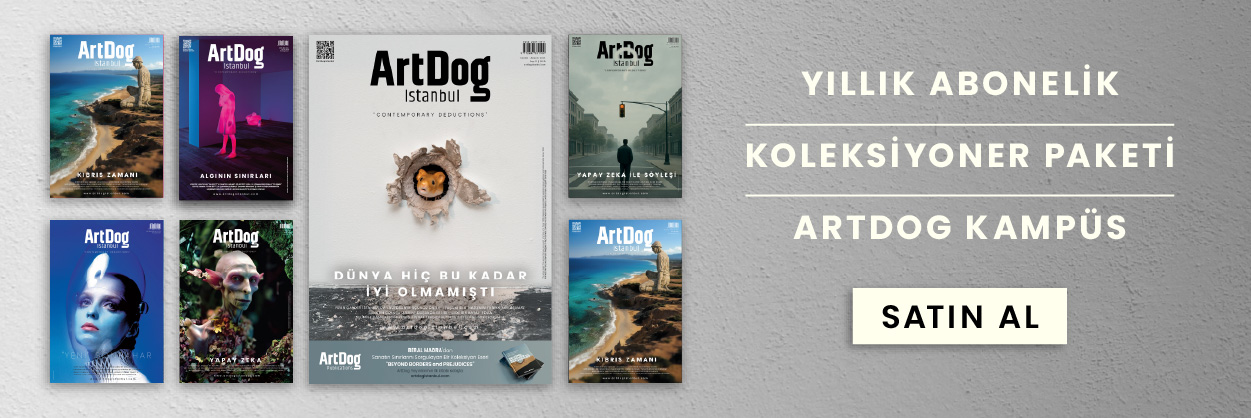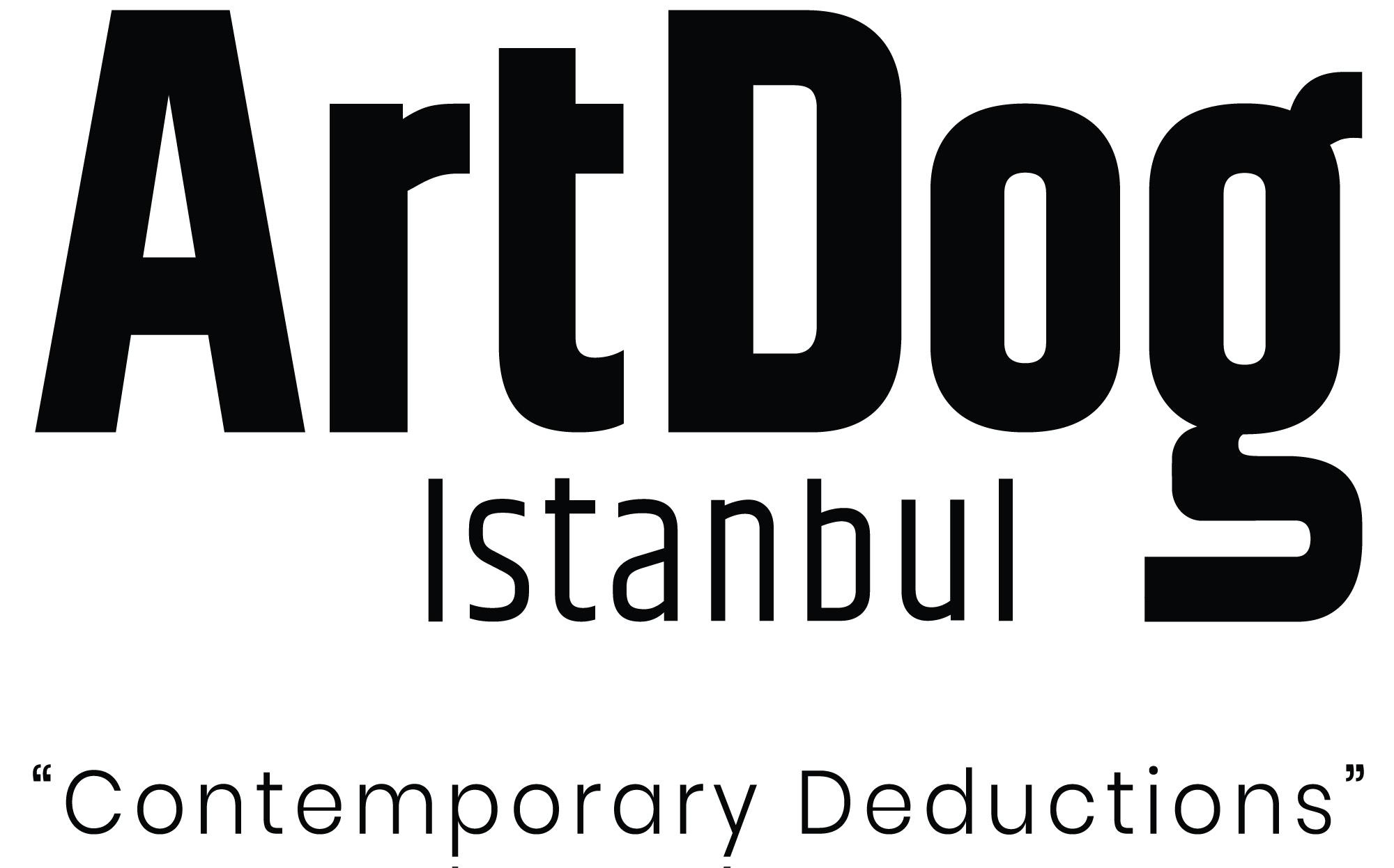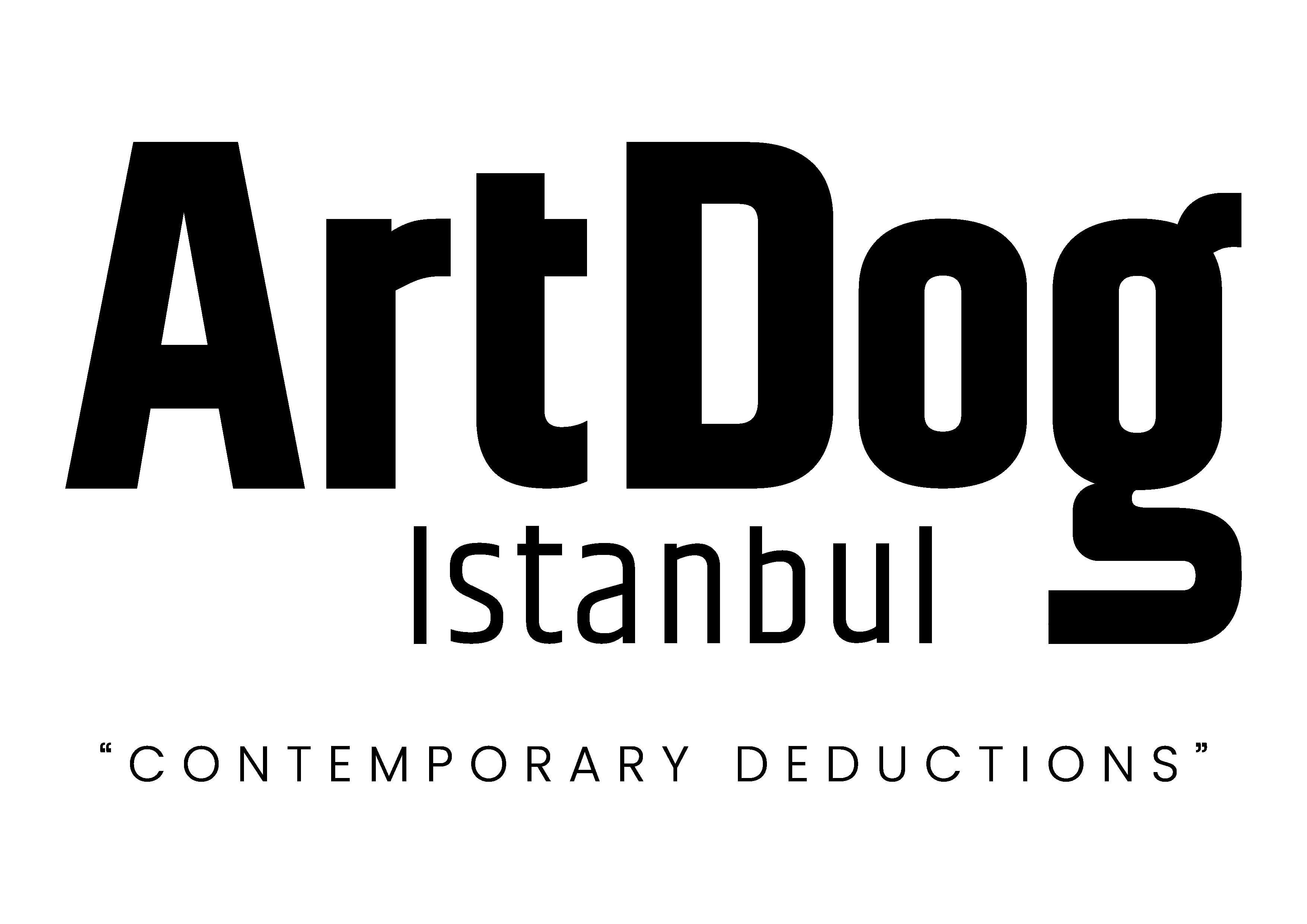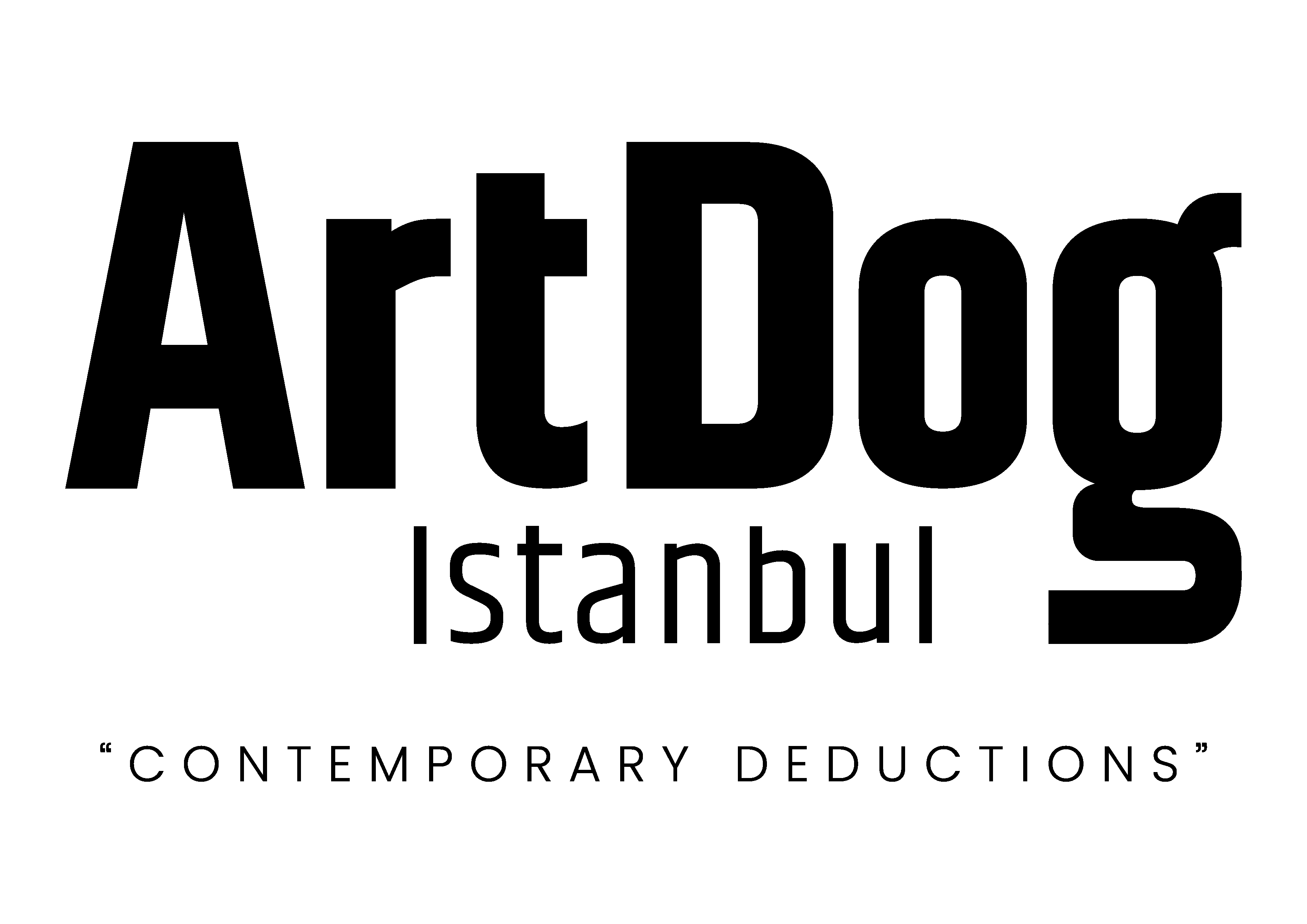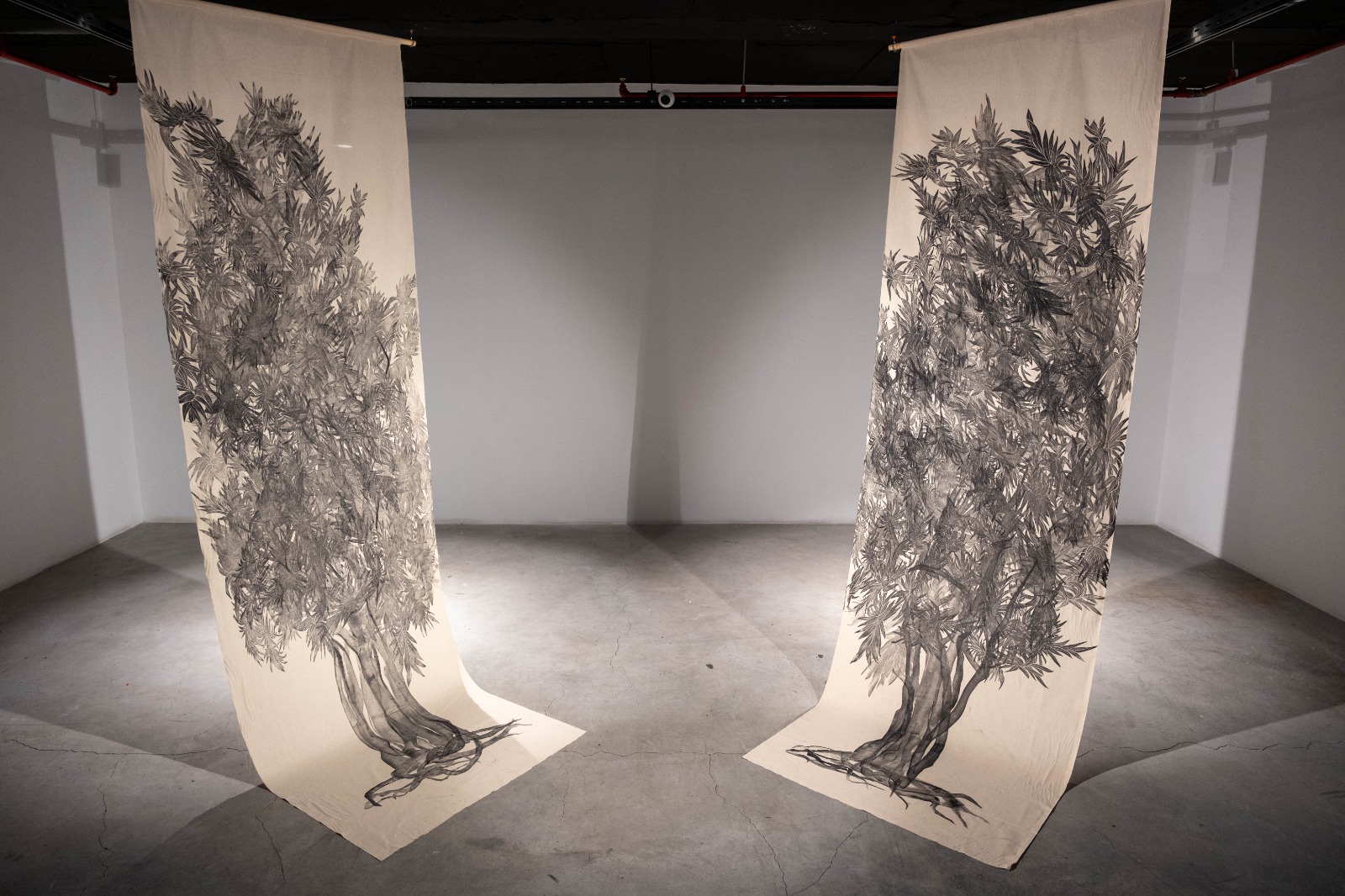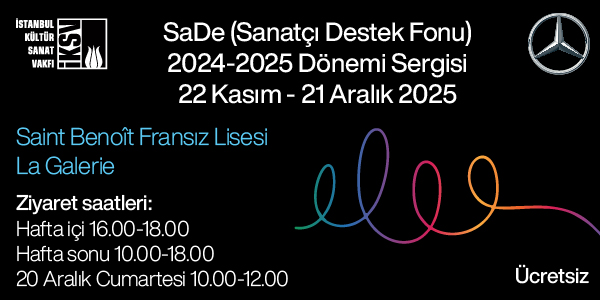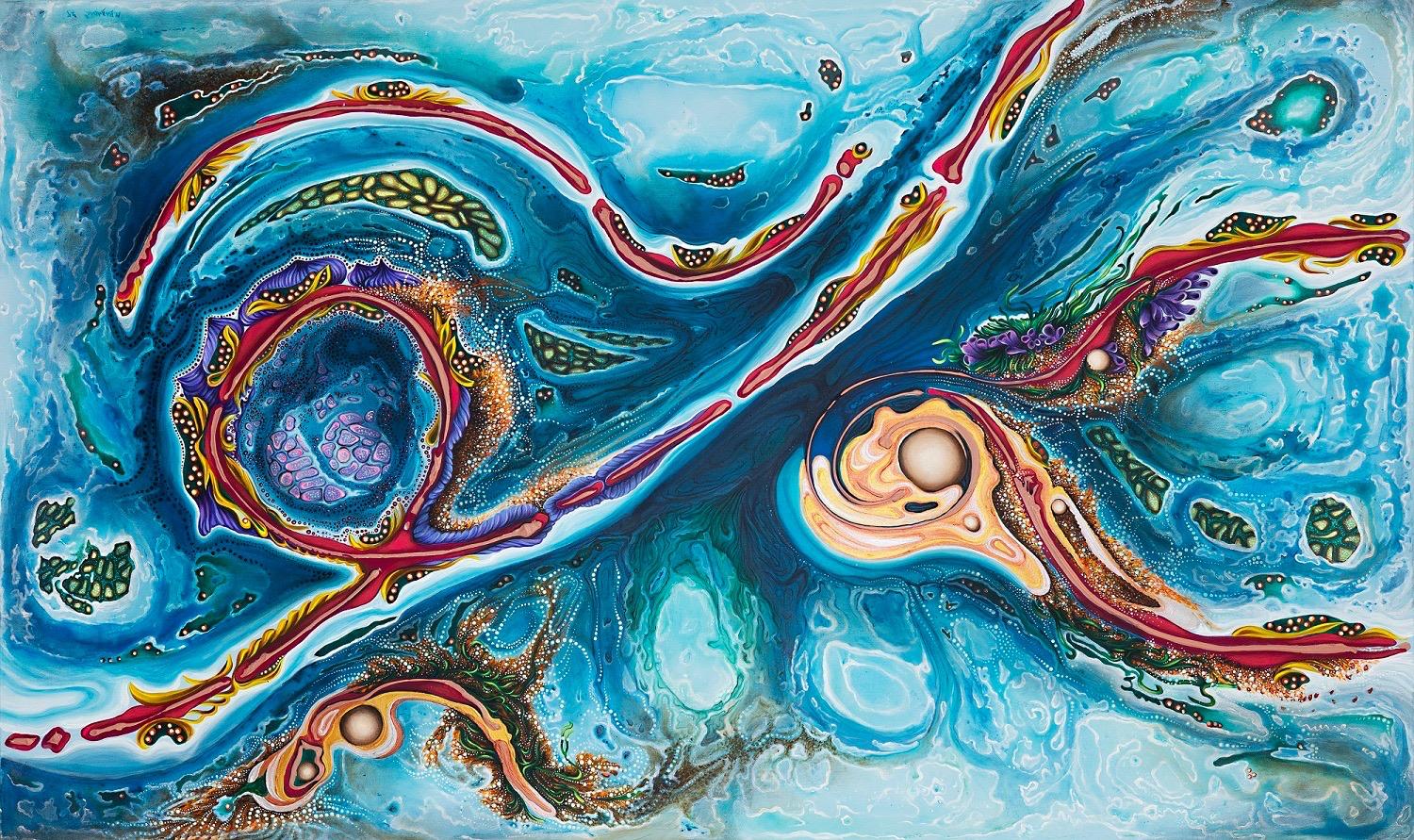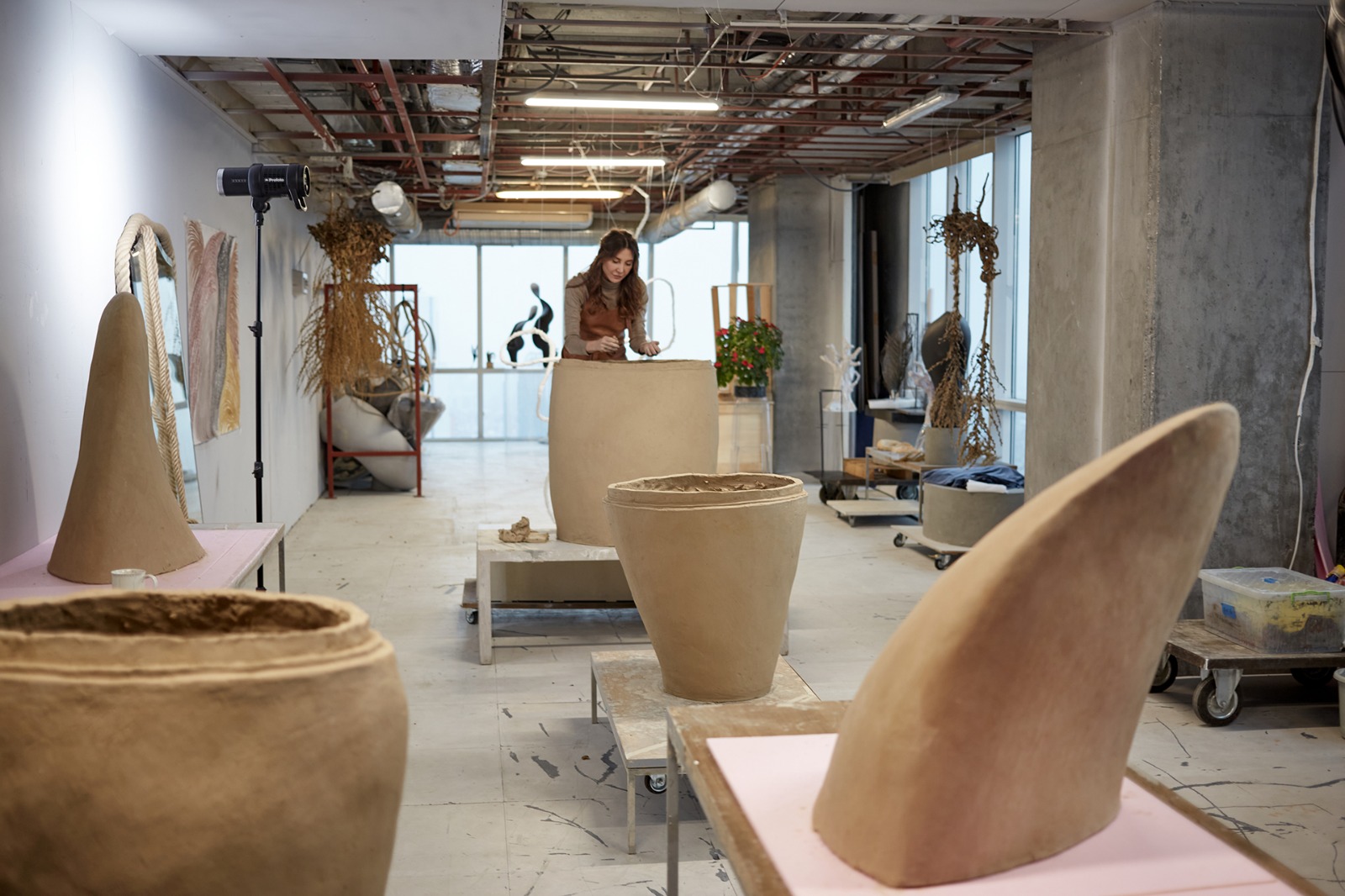The group exhibition Breaking Line at EArt Gallery, curated by Dilara Güven, questions the traces left by human intervention on nature and the boundary between nature and culture. Bringing together original works by ten artists, curator Dilara Güven summarizes the exhibition as “a curatorial approach that makes visible the fragility between nature and culture while discussing both the traces of the past and the possibility of future repair.” We spoke with Dilara Güven about the exhibition, which is open at EArt Gallery until May 25.
The relationship between nature and humans is a frequently debated topic today and has a significant place in art as well. From which perspective does the Breaking Line exhibition approach this relationship, and what kind of attitude does it present?
Breaking Line aims not only to address the nature-human relationship through eco-fragility concerns but also to examine it on cultural, ontological, and aesthetic levels and to evoke memory. I intended to create a dialogue by focusing on the fine line between nature’s intervention in humans and humans’ intervention in nature. Nature is not an idealized whole; on the contrary, it is an actively resistant entity that has been intervened in, reshaped, and sometimes suppressed, and it is positioned in this context within the exhibition. Despite the severed ties between humans and nature, we aim to make visible again the inspiration humans derive from nature. As I stated in my curatorial text, we do not position nature as a passive background; rather, our intention is to position it as a subject with which we can think and relate. This perspective, while signaling eco-fragility, offers an approach that invites a reexamination of our bonds with nature and the reading of the traces these bonds have left in our memory, rather than simply pointing fingers through the artwork.
What was your priority when selecting the works? Could you elaborate based on the works in the exhibition?
As a curator, I aimed for each work in the selection to be more than just a representation within the themes of cultural erosion and the rupture between nature and culture; I wanted the works to create a conceptual and memory-evoking experiential space. My priority was to bring together artworks from different disciplines that accept nature as either material, motif, or intellectual interlocutor. Abdulvahap Uzunbay ironically questions the conflict between order and disorder in nature caused by human intervention, while Ayşenaz Ayral creates a spatial tension by bringing together the rough surface of nature with distortions in digital transmission processes. Başak Çolak addresses existential fractures caused by interventions in nature through tree figures, and Delal Eken reveals the “silent memory” of lost structures beneath water or soil. Eylül Civelek offers a poetic transformation by weaving inner sprouting and identity search with nature. Hüseyin Güler documents quiet ecosystems outside city life, shedding light on the unseen effects of humans. Kaan Sümer visualizes nature’s entropic transformation within a closed system. Nisan Talaz presents a rebirth in harmony with nature but uniquely in each piece through the reshaping of shapeless clay taken from nature. Seçil Büyükkan works on the interrupted bonds of existence and the power of reunion, and Şafak Kocaoğlu reinterprets the permanent scars that gold mining has engraved on nature on wooden surfaces inspired by satellite images. This diversity was planned to reflect the exhibition’s conceptual priorities, and each work brings a different perspective to the theme, creating a coherent narrative.
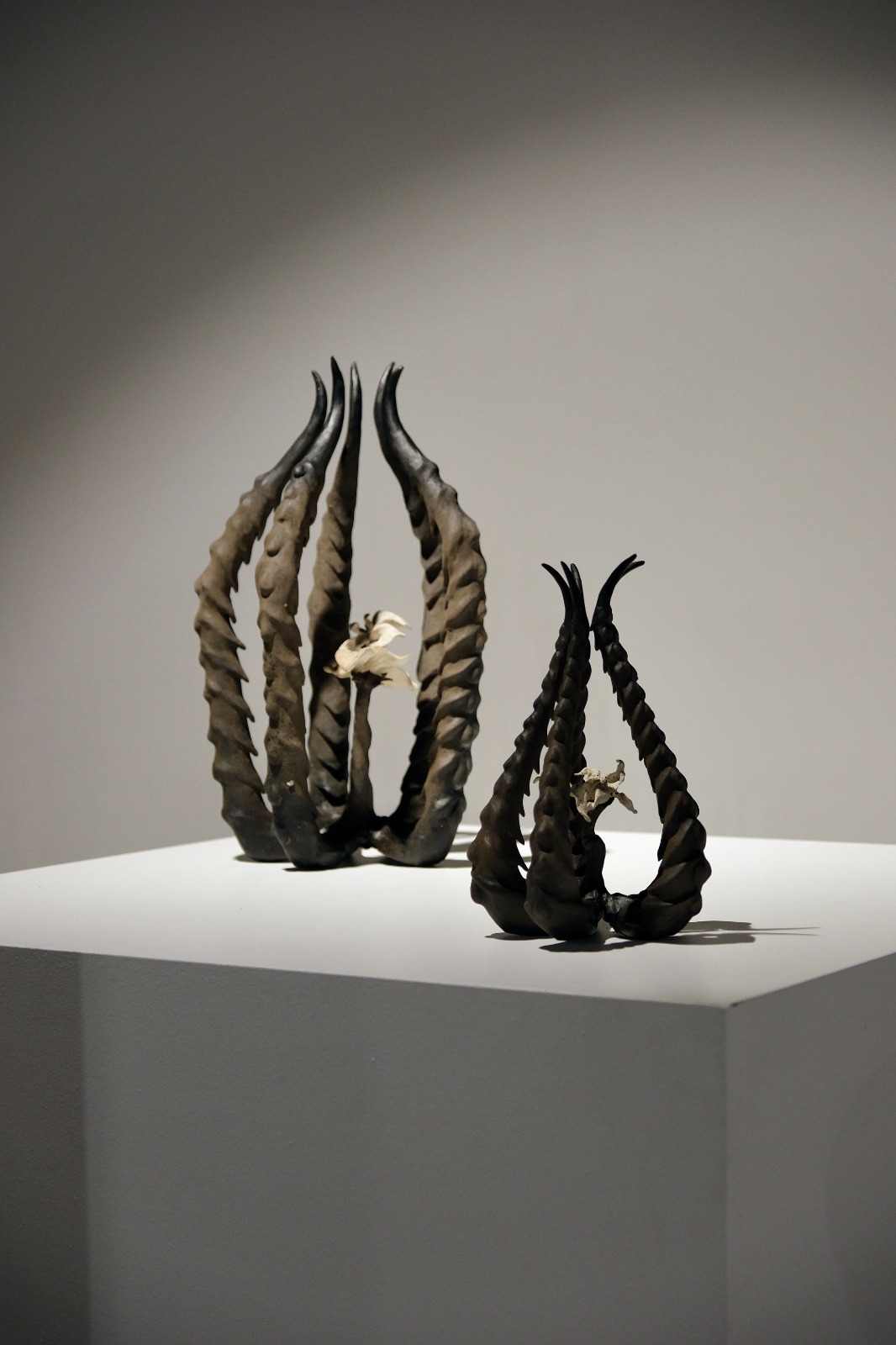
“Between the World and Me”, Ceramic, 2025
You emphasize in the exhibition that nature is no longer a passive background but an active subject. How do the artists consciously represent nature in their productions, and what kind of interaction do they invite from the audience?
This is one of the main emphases of the exhibition. The artists consciously grant subjectivity to nature; they do not only create works that represent nature but form a kind of partnership with it. This partnership sometimes happens through material, and sometimes nature acts as a threshold where the narrative breaks and restarts. While emphasizing human intervention on nature and vice versa, we also acknowledge that nature exists independently as a reality on its own. The works merge the disturbed or destroyed elements of nature with its texture and present it as a partner requiring dialogue. The works invite the viewer not just as a spectator but as a participant who triggers memory, invites recollection, and encourages going back to a memory.
How do the themes of cultural erosion and individual disconnection concretize in the works of the exhibition? For example, how can a narrative bridge be established between Delal Eken’s emphasis on silent memory and Eylül Civelek’s themes of inner sprouting?
These themes materialize through metaphors and imagery. In Delal Eken’s works, structures trapped between nature and cultural memory are central, presenting fragmented traces of neglected and doomed-to-be-erased entities, peoples, and structures. She metaphorizes the “silent memory” of submerged structures beneath water and soil. These traces point not only to a physical but also to a mental and historical state of forgetting. Eylül Civelek’s poetic narrative searches for the individual counterpart of this forgetfulness: the story of a being seeking its roots and trying to grow its inner flower. The narrative bridge between these two productions is based on the need to reconstruct the bond both collective memory and the individual self have with nature. One represents externalized memory, the other internalized transformation; one establishes dialogue between past and future.
The concept of “breakage” is addressed in both a physical and metaphorical plane in the exhibition. How does this multilayered narrative of “breakage” aim to transform the audience’s imaginations about the future?
In the curatorial text, I define breaking points not as an end but as a herald of transformation and new beginnings…

